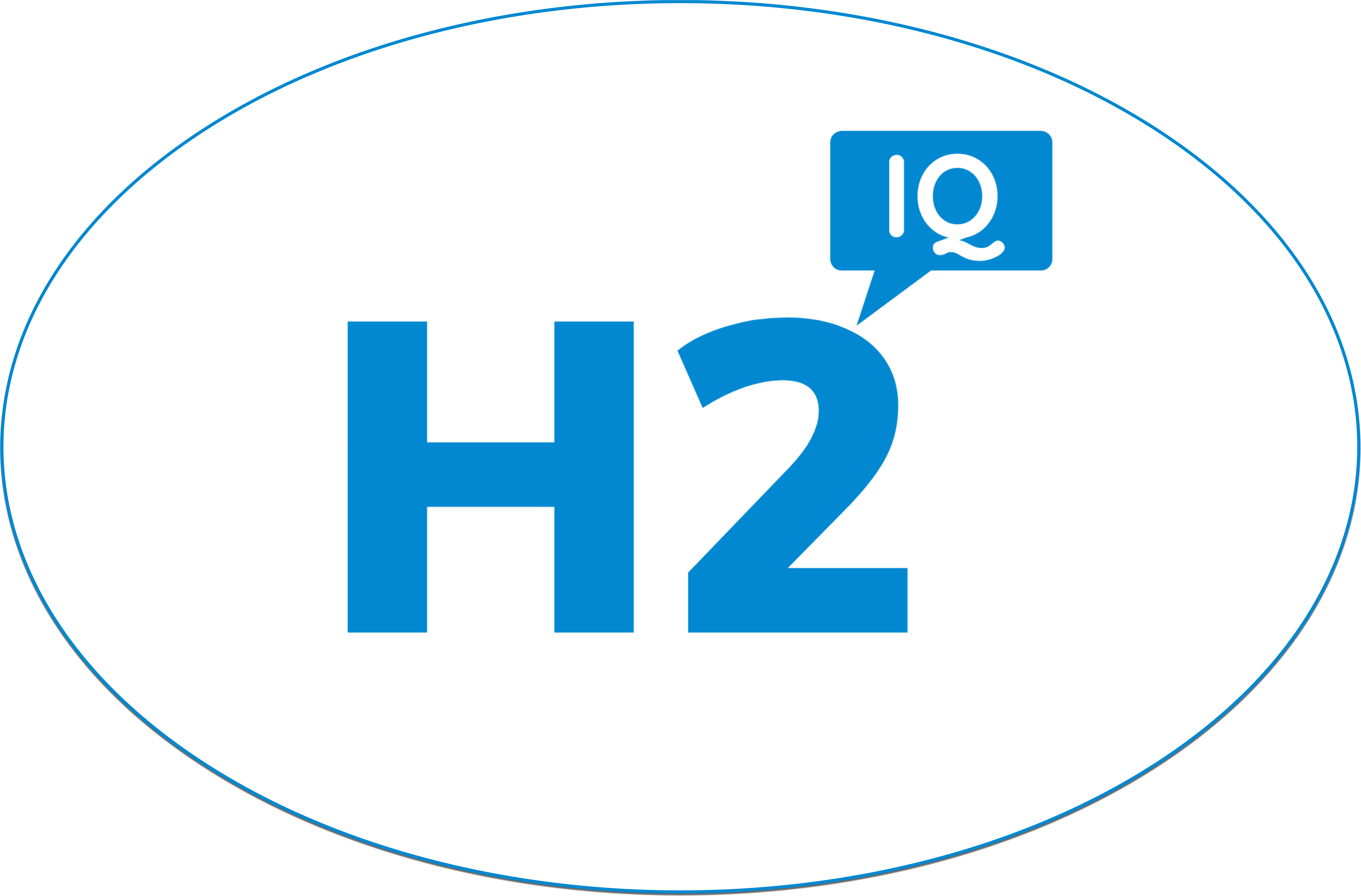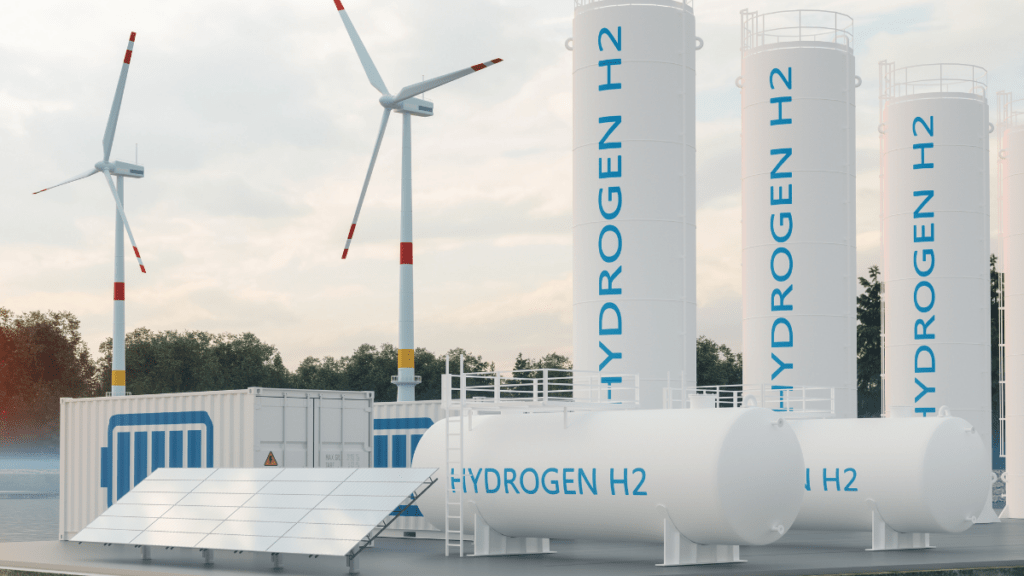
One of the world’s biggest challenges is slashing emissions before it’s too late. In fact, we’ve only got until 2050 in order to avoid some of the worst effects of climate change. And guess what? Asking people to ditch meat isn’t going to be enough.
Even a drastic reduction in the use of fossil fuels alone won’t stop the Earth from reaching a point of no return. Solutions must come from every corner of the world, and cover every major industry and the power and process they use. And they need to come fast.
That’s why the energy transition is a race that can only be won by the most advanced technologies and engineers with unique minds for creative solutions. Otherwise, we risk getting caught in a loop of perpetual motion with respect to greenhouse gas emissions. The story of hydrogen has been a cautionary tale to this end.
The “greenest” hydrogen is now produced using electrolysis, a process powered by renewable energy. But it’s still too energy intensive and threatens to displace renewables from the grid, bringing us back to square one. The dirtier processes use 100% natural gas to produce hydrogen. North America needs more sustainable solutions–everywhere–and it’s running out of time.
Enter GH Power. It’s a Canadian energy producer that may just have the answer. Its 1-25MW reactors use proprietary exothermic reactions to create three highly valuable green outputs: hydrogen, alumina (aluminum oxide) and exothermic heat that can be used to generate power for the grid. This smaller, modular reactor uses zero hydrocarbons and creates no carbon footprint offering flexible solutions based on the end-user. The reactor requires only a small amount of energy to start-up, and then it produces its green outputs at a cost that is significantly cheaper than existing processes such as electrolysis.
The scaled-up 25MW version of this reactor planned for the future produces the same three green outputs using either pure hydrogen or hydrogen blends of natural gas in a turbine. This blend speaks to the heart of the energy transition that is working toward the development of a turbine that can run on 100% hydrogen. With existing turbine technology, GH Power’s scaled-up 25MW reactor will produce hydrogen, alumina and exothermic heat for a carbon footprint that is 25% lower than a system that is run on pure natural gas.
Output #1 Hydrogen: The Race to Transform This Critical Gas
By now, everyone knows that green hydrogen is our only pathway to an energy transition. The International Energy Agency (IEA) believes that the world will need 520 million tonnes of hydrogen to achieve net-zero targets by 2050. One way or another, clean hydrogen will power the world.
Hydrogen is used to make ammonia-based fertilizer for global crops, an area in which going green has reached a critical juncture. Hydrogen could also be the only power source that could wean heavy industry off oil and gas. It could be the only way to decarbonize air travel and heavy shipping.
Presently, hydrogen is produced most commonly either via natural gas reforming (gasification)–a carbon-intensive process–or through electrolysis, which is a clean but expensive and energy-intensive process. There are two huge challenges for hydrogen production: The first is getting the costs down to make it competitive with conventional transportation fuels. The second is mitigating the environmental impacts of the production processes. In other words, while hydrogen as an output is a green savior, if the inputs are transitional, and if it’s diverting renewable energy from the grid and forcing consumers to use more oil and gas as a result, then we’re back at square one.
Using only water and aluminum–a “green” metal itself because it is highly recyclable–North American GH Power has developed a unique process using an exothermic reaction to create three outputs that are critical to a global energy transition: green hydrogen, green alumina and exothermic heat for power generation.
An “exothermic” process means that heat is released by the reaction, taking the form of energy. This is the opposite of an endothermic reaction, in which energy is absorbed from the environment into the reaction.
When GH Power builds its scaled-up 25MW reactor, it will give the world an opportunity to produce significantly cleaner hydrogen for significantly lower costs.
“The only practical solutions for society to reduce carbon emissions is to transition from 100% fossil fuels to cleaner tech,” and one of the steps in tackling this is to blend hydrogen with fossil fuels and ramp up the hydrogen content whenever possible,” says Dave White, GH Power CEO and a veteran engineer in the power generation space.
The hydrogen produced by GH Power provides users with a carbon-free power source, right in North America. The reactor requires only a small amount of start-up power, for approximately 30 minutes. Once it’s running at a steady state, it produces power back to the grid and it’s designed to run 24/7.
And it’s all modular and built within the last-mile of the energy user. For hydrogen, it’s a huge competitive advantage to be able to build a plant right where it’s needed, without massive hydrogen storage facilities and without transportation needs.
With a blend of 25% hydrogen and 75% natural gas, GH Power will burn 2,800 tonnes of Hydrogen/year and 1,091,391 MMBtu of natural gas per year. That’s a 25% reduction in carbon emissions compared to a turbine run on 100% natural gas. In other words, the scaled-up reactor saves the planet from 20,000 tons of carbon per year. GH Power intends to ramp up to 40% hydrogen content in the short- medium-term once the plant is operational, shaving even more carbon off the world’s footprint.
Flipping the switch on a turbine with a hydrogen/natural gas blend of 25/75 is set to make a huge splash, globally. The Paris climate target is a 40% reduction by 2050 of CO2, and there is not a single country that is even close to making that happen. It’s never been done on an industrial scale, and GH Power is hoping to raise the bar here with a first.
This proprietary exothermic reaction technology is award-winning, globally. Most recently, GH Power was awarded $2.2 million in a grant under a joint program by the governments of Canada and Germany. The alliance with Germany will build on Canada’s Hydrogen Strategy and mark a step toward Canada’s objective of becoming a top global supplier of clean hydrogen. In fact, the alliance sees this all kickstarting a new Transatlantic supply chain for hydrogen, with Russia’s war on Ukraine lending significant momentum to these projects.
For GH Power’s unique exothermic reactor solution, the economics make perfect sense. GH Power estimates that its process to produce green hydrogen costs significantly less than electrolysis. And its 1MW reactors don’t require any electricity from the grid, which eliminates further strain and cost on transmission and generation assets.
The near-zero-carbon 1MW demonstration reactor will start generating revenues for GH Power in the third quarter of this year already. Construction/reassembly started on January 12 and will wrap up on April 14. Annually, this first reactor is forecast produce 120 tons of hydrogen, 1,800 tons of alumina, while outputting 1MW of energy via exothermic heat. The cost to complete this first-of-a-kind technology is $7 million, with historic capex is $3 million, with an initial rate of return of 31%.
Once GH Power’s reactor is scaled up from 1MW to 25MW, electrical power generation will be produced from the recaptured exothermic reaction, sending approximately 2.5 MWe gross output to the grid. The other green outputs–hydrogen and alumina–will be directed to other commodity markets in significantly higher volume. And that’s where revenues start to look even more interesting. The scaled-up version has a projected EBIDTA of $51 million and an IRR of 45%.
There’s a fourth revenue stream, as well–carbon credits. The team at GH Power is in the process of joining the Vera Carbon Pathway program, which provides a mechanism for generating and verifying carbon offset credits to add to the revenue stream. Initial estimates are that GH Power could produce 1.1 tons of carbon offset credits for every ton of alumina produced. The company should be selling carbon credits by April next year.
Output #2: Alumina, The Essential Greening in the Shadow of Hydrogen
While hydrogen gets all the hype, the greening of aluminum oxide, or alumina, is critical if we are to meet our 2050 climate goals. Alumina is a highly valuable mainstay of countless industries. At its highest grades, it is used in LED lighting, semiconductors, electric vehicle batteries–and all of today’s key consumer electronics. At its lowest grades, it is used as an industrial abrasive and in the production of aluminum. Alumina demand is soaring, and we’re looking at a supply squeeze in the next few years.
But we can’t just produce more alumina. We need to produce green alumina.
Traditionally, bauxite refineries produce alumina by refining bauxite and raw aluminum ore. This refining, called the Bayer process, is toxic, and produces a byproduct called “red mud”. It is energy and chemically intensive and has a significant carbon footprint. Again, using only two inputs–aluminum and water–GH Power is setting out to change how we produce alumina. The green alumina it produces in its 1MW reactor, which is currently being prepped for commercial operations, leaves no carbon footprint. The GH Power reaction produces high-quality, high-purity aluminum oxide as a byproduct of the oxidizing reaction, which itself is virtually carbon-free.
When the National Research Council of Canada conducted a life-cycle analysis (LCA) of GHP’s alumina production process, it concluded that it produces 85% fewer carbon emissions than the Bayer process. And GH Power is continually working to reduce the footprint even more by experimenting with different aluminum feedstocks, including recycled aluminum and end-of-life aluminum. The value of alumina should not be underestimated. While prices vary significantly depending on grade, for the highest grade, alumina fetches up to $50/kg.
And GH Power has a clear cost advantage when it comes to production–and greening. As the aluminum slurry reacts with water in GH Power’s reactor, the oxygen leaves the water molecule and attaches to the aluminum. For every 1 kg of aluminum reacted, 1.8 kgs of green alumina is created. GH Power estimates that its cost to produce green alumina is over 85% cheaper than other existing processes.
Direct competitors in alumina production, such as Alpha HPA, FYI Resources Limited and Altech Chemicals fall short on emissions, annual volume projections, production costs and estimated margins. GH Power’s forecast Capex per ton is only $555, compared to $20,000 for the closest competitor (Alpha HPA) and nearly $67,000 for Altech. It’s winning the margins game, too, with a margin estimate of 92% compared to the next highest, FYI Resources, at 75%. While Altech’s production cost is $9.9 per kilogram, GH Power is forecast to produce at only $2/kg.
GH Power’s first commercial reactor in Ontario is expected to be producing 1,800 mt of alumina annually, potentially generating ~$6 million in annual revenues. And, importantly, GH Power’s 1MW reactor process for producing alumina gives us a zero-emissions product, while its three competitors are using carbon-heavy hydrochloric acid leaching and aluminous clay conversion.
Output #3: Exothermic Heat, for Clean Power Generation
While hydrogen produced through electrolysis relies on a significant amount of constant renewable energy, removing that energy from the grid, GH Power’s reactor is returning clean energy to the grid through exothermic heat. It’s doing this only 30 minutes after startup, for a self-sustaining reaction.
The market applications are truly diverse: This proprietary exothermic reaction technology can produce electricity to power homes and industries, steam to provide district heating, and fuel for cars, trucks, buses, trains–and even large sea-faring vessels. And its green hydrogen can be blended into existing natural gas pipelines to reduce carbon footprints.
Approximately 50% of the energy from GH Power’s reactor can be turned into heat, steam or electricity. That will render the company a net power producer to the grid. The team at GH Power represents the leading minds in power generation, and collectively, they have commissioned over 20 power plants.
Led by CEO Dave White, a power-generation facility construction veteran, GH Power has been quietly working on its boldest move in the sector yet. Once the reactor in Hamilton is up and running commercially, we could see a clear pathway to a future of rational green hydrogen production.
When GH Power switches the switch on its first 1MW reactor in Hamilton, Ontario, the world will be watching the energy transition victory that started back in 2018, when engineers began experimenting for a breakthrough. That breakthrough came when these engineers–who today form GH Power–discovered that they could “react”, in a continuous manner, any form of aluminum, including aluminum waste, to create green hydrogen.
Using only two inputs, zero hydrocarbons and only about 1% of the land required to produce solar energy, GH Power is gearing up to bring its first 1MW reactor online commercially. It’s a circular economic model that creates multiple revenue streams, with free cash flow expected in the third quarter of this year, and the company is looking at enhanced returns of 45% before tax credits and 70% after tax credits. That’s only the beginning. GH Power has originated a pipeline of 5-30 MW power projects, around the world.
Scalable, modular, affordable–and vastly cleaner, GH Power’s unique solution for three green outputs helps define how we can truly tackle the energy transition and contribute to net-zero emissions by 2050.
IMAGE (above): Picture from the World Hydrogen Summit (held on May 9-11, 2023) taken after the 14 organizations signed the agreement to jointly accelerate hydrogen innovation. Taken on May 9, 2023. Credit: Sustainable Energy Council (SEC)/World Hydrogen Summit 2023(WHS 2023).





